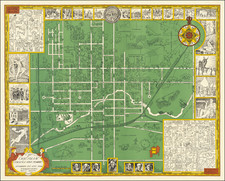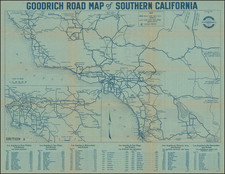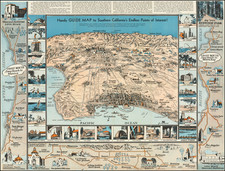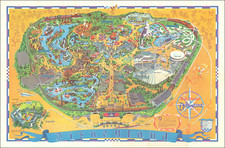Rare illustrated promotional brochure for Sherman, California, offering a captivating snapshot of early 20th-century real estate marketing and the booming development in the area of Hollywood and Beverly Hills.
We date the map based upon the stamp on the map of G.J. Fifield, who seems to have been active selling real estate in Los Angeles between about 1910 and 1912.
On the front map side, a small map illustrates Sherman's location, ringed by early photographs of the view from Sherman and homes unders Construction, promoting the founding of the town in 1897.
This brochure, dating from the early 1900s, showcases Sherman as a burgeoning community "on the way to the sea," strategically positioned just west of Hollywood and adjacent to Beverly Hills. The brochure emphasizes Sherman's accessibility, touting it as an ideal place for homes, businesses, and investments during a period of rapid urban expansion in Los Angeles County.
Sherman, California, founded about 1896, would later be renamed and known as West Hollywood. It was established by Moses Hazeltine Sherman, a notable figure in the Los Angeles real estate scene. The area was initially developed to house the workforce of the Pacific Electric Railway, of which Sherman was a partner. Its advantageous location, situated between the glamour of Hollywood and the affluence of Beverly Hills, positioned Sherman as a prime location for residential growth and development.
Moses Hazeltine Sherman, after whom Sherman was named, was a key player in the development of the Los Angeles area. He was not only a businessman but also an educator and public official. Sherman acquired land and utilities, and he played a significant role in the development of the city's streetcar system, which facilitated the growth of Los Angeles and the surrounding areas. His investments in the Los Angeles Pacific Railroad and other trolley lines helped to connect disparate parts of the growing city, promoting the expansion of its suburbs.
The brochure reflects the real estate boom in Southern California in the early 1900s, a period characterized by rapid population growth and a speculative investment frenzy in land development. At the turn of the century, Los Angeles was experiencing exponential growth, with its population nearly tripling between 1900 and 1910. This growth was fuelled by factors like the discovery of oil in the region, the establishment of the film industry, and the massive investment in infrastructure development, such as railways and roads.
In the brochure, Sherman is depicted as an idyllic community with modern conveniences, outstanding natural beauty, and a range of amenities including direct trolley service from Los Angeles, proximity to the ocean, and a valuation of $1,250,000. The brochure boasts about 200 new homes erected in less than two years, 30 acres of white-bean fields, and large avocado orchards, suggesting a blend of agricultural prosperity and modern living. It also highlights the educational facilities, including a $100,000 high school, which denotes a significant investment in community development for that era.
Emphasized Facts and Features:
- Sherman was touted for its strategic location near Santa Monica mountains and was billed as a "Real Good Place to Live."
- The brochure highlights Sherman's modern utilities, paved streets, and the inclusion within the Los Angeles school system, portraying a community poised for comfortable living.
- It details the four main boulevards from Los Angeles to the sea, underscoring Sherman's connectivity.
- It mentions prominent areas such as Hollywood, Beverly Hills, and the Santa Monica Ocean Park, aligning Sherman with nearby successful developments.
- The promotional material emphasizes its adjacency to Hollywood and proximity to Beverly Hills, implying a shared cachet with these more famous neighbors.
- Moses H. Sherman, the promoter of the area, is represented as a visionary figure in the expansion and development of the Los Angeles region.
- The brochure positions Sherman within the larger narrative of Los Angeles' westward growth, an area brimming with opportunity during the early 20th-century real estate boom.
Rarity
The brochure is very rare. We were unable to locate another example.











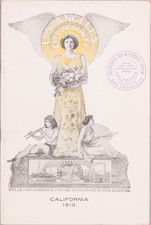
![[Pictorial Map of the United Arab Republic] Kharitat Musawwarat al-Jumhuriya al-'Arabiya al-Muttahida / خريطة مصورة الجمهورية العربية المتحدة](https://storage.googleapis.com/raremaps/img/small/55146.jpg)
